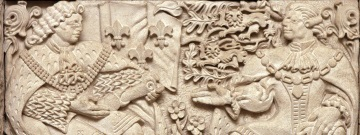Chapter 12 The Process of Debate

The principle underlying parliamentary procedure is that the minority should have its say and the majority should have its way.
PHILIP LAUNDY
(Parliaments in the Modern World, p. 95)
The process of debate begins when the Speaker, upon receipt of a motion in writing, duly seconded, submits it to the House and proposes the question to determine whether the House wishes to adopt it. If the motion is debatable, Members may then be recognized to make speeches. The process of debate ends after the motion and any proposed amendments and subamendments have been considered and no Member not yet having done so wishes to speak or the House has ordered debate to conclude. The debate having ended, the original or amended motion is reread by the Speaker and the question for the adoption of the motion is put to the House for a decision. The most basic components of this process are the “motion” and the “question”: the motion being a proposal that the House do something or express an opinion with regard to some matter; the question being the mechanism used to ask the House if it agrees with the motion, first, when it is proposed by the Speaker, and second, when it is put to the House for a decision at the conclusion of debate.
As in all deliberative bodies, discussion in the House of Commons must always be relative to a definite proposal (or motion).1 The House responds to such specific proposals by deciding on questions put to it by the Speaker. Without a motion and a question, there can be no debate.2 Once a question has been proposed by the Speaker, debate may take place. The Speaker enjoys extensive powers to enforce the rules of debate. These rules include, in general, limitations on what may be said, when and by whom it may be said, and for how long each debater may speak. The intent of these rules is to guide the flow of debate and to protect it from excess.3
During the process of debate, the House follows a basic sequence of steps: providing notice of a motion; moving and seconding the motion; proposing the question from the Chair; debating the motion; putting the question on the motion; and, arriving at a decision on the motion. This chapter describes the steps in this sequence, and discusses the rules and practices of the House applicable to each.